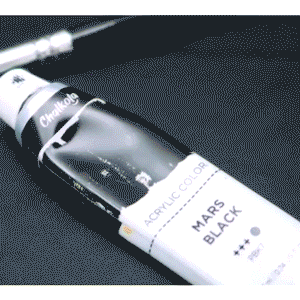Back to the Art Creators' Hub ▸ Essential Watercolor Painting Supplies
Essential Watercolor Painting Supplies
Now that you know how to select the right watercolor paint, it’s time to gather supplies. Here’s a list of all the materials you will need:
Pencil
Because watercolors are transparent, you’ll want to use very light lines in your preliminary sketches. A hard-lead pencil works best for this purpose. You can use a standard #2 (HB) pencil or buy one with a harder lead grade ranging from H to 4H.

Paintbrushes
Watercolors can be used with any paintbrush, but for general use, it’s best to find a set with softer and more flexible bristles. This lets you bend the brush as you drag the paint, so you can take full advantage of its flowy nature.

You can get an affordable set online or in most art supply stores. These sets contain various brushes, with different shapes suited for specific purposes or techniques. Round brushes are the most versatile and have a tapered edge so you can create both broad strokes and details. Flat brushes, on the other hand, are useful for filling in large areas and adding the appearance of texture to your piece.
There are also other shapes such as fan, angled, and liner that will let you use more techniques in your practice.
Aside from traditional paintbrushes, there are also water or aqua brushes suited for on-the-go painting. These have a water reservoir inside them so you can rehydrate the brush conveniently.
Watercolor Paper
For watercolor painting, you want to choose a heavy paper that absorbs water well. This lets you paint multiple layers without the risk of the paper buckling and possibly ruining your hard work.
There are two standards for measuring a paper’s weight. The first is the US standard, which refers to the weight of a ream (500 sheets) in pounds. There’s also the ISO standard, which gives the weight in grams per square meter (gsm). For the best results, you want to get a paper that weighs 140lbs or 300gsm and above. These are usually indicated on the product label, so you can check the weight before purchase.

Watercolor papers are also available in three different textures: hot press, cold press, and rough. Hot-pressed papers are the smoothest, allowing you to apply fine details and uniform blocks of paint. However, don’t discount cold-pressed or rough sheets. Their texture lets the paint flow and well in certain areas, resulting in more variations per layer.
For those just starting out, cold press paper is a good middle ground — it’s slightly toothed so you can have more control over the paint while still being smooth enough for broad applications.
Two Jars of Water
If you’re using traditional brushes, it’s a good idea to have two separate wells of water. The first is for dipping clean brushes in, and the second is for rinsing paint off of your brush. This helps prevent color contamination so you don’t end up with muddy shades.

Palette
You want to use a palette that has two or more pigment wells for easy mixing. Most watercolor pans come with a lid for this purpose, but some artists prefer using a separate palette as it gives them more space to work with. You can also mix colors in repurposed lids or caps. It’s both cheap and environmentally friendly!

Other Materials
Aside from the ones listed above, here are a few more watercolor painting supplies that will come in handy:

